Hello everyone and welcome back to my blog.
This edition of the Ladies of Hive contest is just awesome and I'm happy to be part of this community! The questions of the week are:
What do you do for the environment and what is your best tip? Tell us about your 'Green' side!
or What animal(s) make the perfect combination to describe yourself? And why?
or What music needs to be played at your funeral (or wedding, if you want to write about a happier occasion)?
I decided to answer the first question, which is very appropriate, as the past months have been very important for my path towards a more sustainable and ecological lifestyle. In fact, from the first days of September I decided to undertake the zero-waste philosophy and I must say that I feel very well, today I will tell you everything!
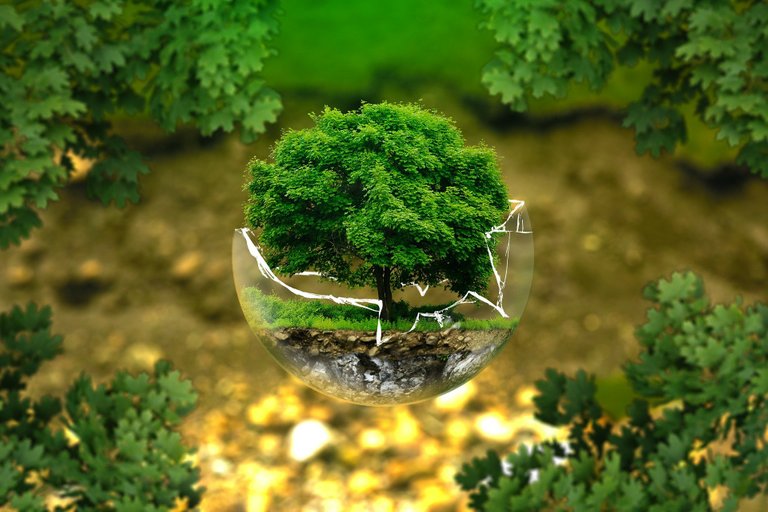
Photo by ejaugsburg from Pixabay
Many of you surely already know this word, but for those new to the term, here is the definition:
"Zero-waste is a movement that promotes the conservation of all resources through responsible production, consumption, reuse and recovery of products, packaging and materials without the use of incinerators and without discharges into the soil, water or air that threaten the environment or human health. Zero-waste encourages a more circular approach to how we use resources”.
Why did I decide to take this path? It all happened very spontaneously. I started getting closer to a more sustainable lifestyle when I converted to the vegetarian diet (9 years ago, I'm getting old sigh!), and I realized that many habits belonging to the zero-waste movement were already part of my everyday life. So I thought of making the definitive leap to further improve and try to reduce the impact of my existence on this planet.
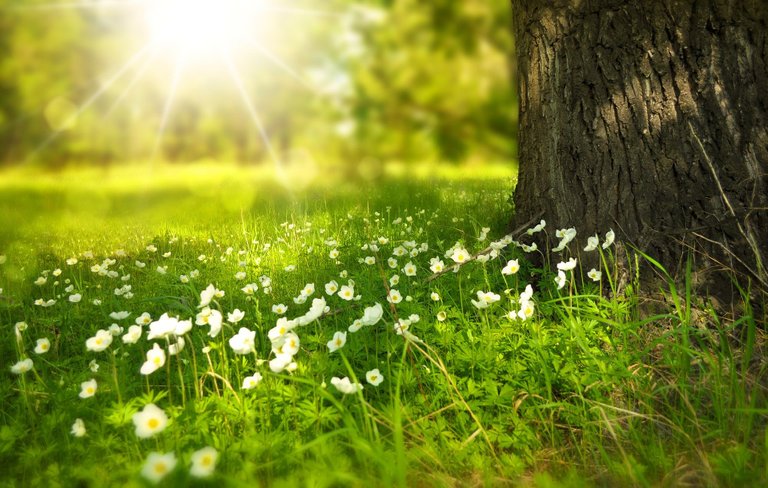
Photo by Larisa Koshkina from Pixabay
First of all it is necessary to make a clarification: with zero-waste we do not really mean "zero", as it would be impossible to completely eliminate your consumption while maintaining a healthy lifestyle.
The goal is simply to reduce as much as possible your environmental impact with regard to all those activities typical of the unbridled consumerism of our times. It is a journey made up of small steps, simple daily activities to be adopted according to one's time and availability.
To give a practical example, I work and study in the pharmaceutical sector, and I would find it unthinkable to adopt the zero-waste philosophy in this area: many medical-surgical aids, the instruments and the drugs themselves are disposable and packed in sterile packages, but it is precisely this that allows us to ensure quality and safety that can be used for our health.
So, zero-waste yes, but with awareness and always considering the risk/benefit ratio from a scientific point of view!
Adopting a zero-waste lifestyle, with the aim of reducing your waste and consumption, may seem very difficult and demanding at first, but I can assure you that there is nothing more false. We must start from the assumption that perfection does not exist, all we have to do is have a greater awareness of the world around us: "Do I really need this plastic packaging?", "Is there a more sustainable alternative to the object that am I using?”, “Can I wash and reuse this product instead of throwing it out and buying a new one?”,… These are some questions that have helped me change my way of thinking day by day.

Photo by Anemone123 from Pixabay
Now let's move on to the advice part. Here are the main daily activities that I have included in my lifestyle to make it more ecological and sustainable:
The first and most important step that I decided to embrace was to adopt a plant-based diet. There are a thousand reasons why I decided to become a vegetarian, but the strongest motivation is certainly the environmental impact. In the area where I live, many meat and fish products are consumed, and I was able to see firsthand the entire production chain. Think that the production of 1 kg of beef requires up to 15,000 liters of water to be produced, it is a quantity that one cannot even imagine, and this consumption becomes even greater if one considers the dairy products of cows and sheeps. A completely different matter is the production of 1 kg of cereals and legumes, the consumption of which is around 1,200 liters of water. The latter, as we all know, is a precious resource and I think it is part of our duty as human beings to try to preserve it. The consumption of meat is also involved in the massive emission of carbon dioxide and methane into the atmosphere, as well as one of the main causes of deforestation and desertification of soils;
Staying on the subject, drinking water in plastic bottles is one of the biggest problems in our society. Nowadays, all homes are supplied with drinking water from the tap, which is checked daily by companies that deal with environmental analytical chemistry. Nonetheless, many people insist on buying water bottles in plastic packaging. This leads to numerous problems: the disposal of the packaging, the cost of production and the pollution related to road transport, in addition to the impact on health and the environment of the microplastics that are released. My advice, therefore, is to buy glass bottles and drink tap water, or to inquire about home water services with returnable glass bottles. In addition, in many Italian regions, the "Water Houses" have been created, of drinking water supply points filtered with activated carbon, therefore also suitable for people who have kidney diseases and require low sodium water in their diet;
Even in the kitchen you can improve your habits. In fact, nowadays we are surrounded by disposable products: napkins, cutlery, trays, glasses, … which can be easily replaced with more durable, healthier and, often, even prettier objects. To give an example, until a few decades ago, many people used cloth handkerchiefs and on the table everyone had their own embroidered napkin, in my opinion it was a beautiful habit! Or, I realized that I used a lot of cling film, as I eat out every day and had to cover my lunch. I discovered, however, that there is a beautiful alternative: a film made from beeswax, completely washable and reusable;
Female menstruation is a natural and beautiful thing, but the purchase of disposable pads and tampons is really dangerous for our planet. In fact, this kind of products must be thrown away and isn’t recyclable, at least for now. It is estimated that, in a lifetime, a woman uses at least 12,000 sanitary pads! It is really a very high amount. If even half of us women used eco-sustainable methods, the impact would be drastically lower. The possible alternatives are many. For example, on the market you can find numerous brands of washable sanitary pads, which can be washed with Marseille soap and have a duration of up to 20 years as they are made of durable materials, or there are menstrual cups, of any shape, size and capacity. A small change for us women, but a big step forward for the environment;
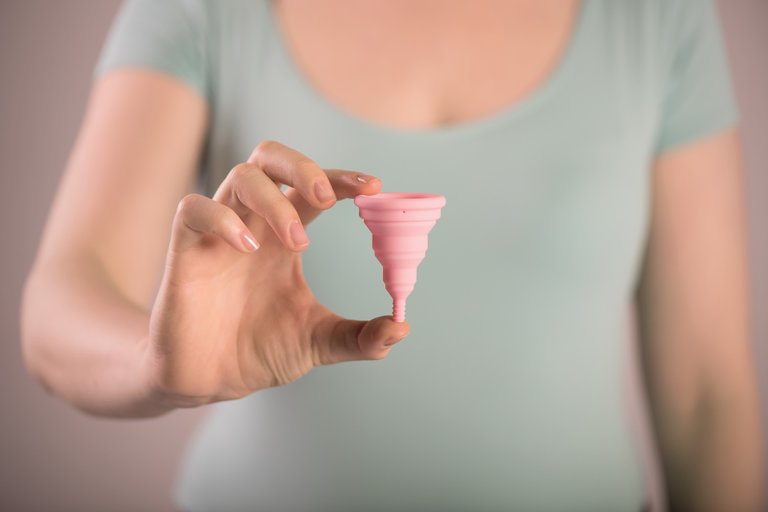
Photo by PatriciaMoraleda from Pixabay
Stores with products without packaging are spreading. In my city, Bologna, there were very few of them until a few years ago, but now almost every supermarket has an area dedicated to packaging-free products. Detergent, fabric softener, soap, but also legumes, cereals, pasta, fruit and vegetables: almost everything can be purchased in this way, often also favoring local traders. For example, for fruit and vegetables, you can often use your own bags or nets to insert the items, or for certain things you can avoid using fruit and vegetable bags, but price directly on the product. It is also better to avoid plastic packages that contain already cut fruit and also unnecessary packaging. In this regard, an anecdote comes to mind: last year in a supermarket I found a single tangerine peeled and packed in a plastic package, and I thought that we are really crazy, as the tangerine already has its own natural "package" , the peel!;
If you really can't avoid buying a plastic package, you can think of finding a second use. For example, I am passionate about cultivation and I use some old yoghurt pots, after having made a small hole in the bottom, to germinate seeds and cuttings of my plants, waiting to be moved to other pots when they are larger;
The toothbrush! It is estimated that a person changes about 4 toothbrushes a year, which for an average life of 80 years make 320 toothbrushes each. Why not move towards a more sustainable choice, for example the toothbrush with interchangeable heads or bamboo? In this way, the impact of disposing of plastic would be much less;
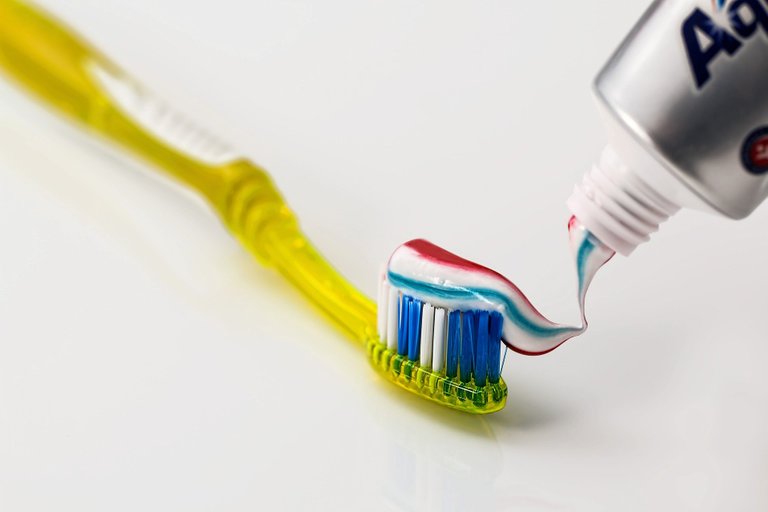
Photo by Steve Buissinne from Pixabay
Another key word is self-production. Many everyday foods can be made at home with just a few simple ingredients. A revolution for me were piadina (a sort of Italian bread wrap) and fresh pasta! I eat them at least 2/3 times a week, but since I learned how to make them I have not bought them anymore, resulting in significant savings for my wallet, as well as a benefit for the environment. The same goes for bread, focaccia and other baked goods, even if in this case I find myself buying them from time to time because I'm very busy and I don't have time to keep up with the leavening. Even household cleaning products and detergents can be prepared following simple recipes with a few ingredients such as baking soda, vinegar, lemon, essential oils, distilled water, soap, ... The web is full of nice tutorials, take a look!;
Clothing is another very important issue and the subject of discussions. What is the average life of an item of clothing? Until a few decades ago, people had few clothes, but of excellent quality and workmanship. Today, however, fast-fashion was born, that is low-cost fashion, where production takes place in poor regions of countries such as China and Thailand, where the exploitation of workers is the order of the day and the raw materials are of very low quality. The result is that we are full of clothing items that will last a few years at the most and will inevitably end up in the bin. What can we do? First of all, better target our purchases: avoid clothing chains that notoriously exploit workers and ask ourselves what is behind the bargain price of a suit. Another strong point is re-use: there are numerous sites and markets where you can sell and exchange your pieces, giving new life to your wardrobe while respecting the environment where we live. When a fabric reaches the limit of its life, it is possible to recycle it, for example by cutting it into pieces and making a blanket, or rags to clean, or even special gift papers: give space to the imagination;
The last point does not belong to the zero-waste philosophy, but I think it is an equally important issue: the zero-kilometer products. In my opinion, in fact, it is essential to try to promote the local economy by purchasing products that have traveled for a few kilometers before arriving at the shop or market. Transport, whether by road or by air, is one of the main causes of global pollution and I think that each of us can do his part in this sense. From a food point of view I feel very lucky, because in Italy nothing is missing: we have fruit, vegetables, cereals and food products of all kinds, but each country has its own riches and we simply have to find a way to cooperate all together for sustainability global.
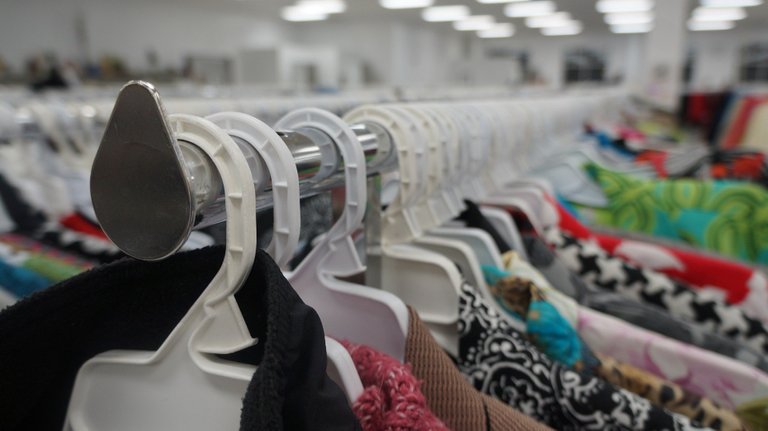
Photo by Carla Burke from Pixabay
As you have seen, these tips are very simple and can be implemented by anyone in their daily life. There is still a lot more to say, but I'll stop here for today.
In the future I would very much like to address the issue of environmental impact in a more scientific and professional way, attaching articles and information, so I hope this post was interesting for you. Let me know what you think! And you, are you sensitive to the issue of sustainability? What is your "green" side? Do you have any advice for me?
For my entry of the #7 Ladies of Hive contest it is required to invite another woman to the community, and I couldn't help but think of @titti! She is a wonderful Italian artist who always delights us with her installations and contemporary art posts. I absolutely recommend you start following it, you will be amazed by its originality and professionalism!
I also leave you the links of three posts I wrote a few months ago on the environmental issue:
Environmental issue and cinematography – Problematica ambientale e cinematografia
Monitoring of water and its pollutants - Il monitoraggio dell’acqua e dei suoi inquinanti
Calculate your carbon footprint! - Calcola la tua impronta di carbonio!
Thank you so much for reading this far.
See you next time,
Delilha

ITA
Ciao a tutti e bentornati sul mio Blog.
Questa edizione del contest di Ladies of Hive è semplicemente fantastica e sono sempre più felice di far parte di questa community! Le domande della settimana sono:
Cosa fai per l'ambiente e qual è il tuo miglior consiglio? Parlaci del tuo lato "Green"!
oppure Quali animali costituiscono la combinazione perfetta per descrivere te stesso? E perché?
Oppure Quale musica deve essere suonata al tuo funerale (o matrimonio, se vuoi scrivere di un'occasione più felice)?
Ho deciso di rispondere alla prima domanda, la quale cade proprio a fagiolo, in quanto i mesi passati sono stati molto importanti per il mio percorso verso uno stile di vita più sostenibile ed ecologico. Infatti, dai primi giorni di settembre ho deciso di intraprendere la filosofia zero-waste e devo dire che mi sto trovando molto bene, oggi vi racconto tutto!

Foto di ejaugsburg da Pixabay
Molti di voi sicuramente conoscono già questo termine, ma per chi fosse nuovo nel settore ecco la definizione:
“Lo zero-waste è un movimento che promuove la conservazione di tutte le risorse mediante produzione, consumo, riutilizzo e recupero responsabili di prodotti, imballaggi e materiali senza utilizzo di inceneritori e senza scarichi nel suolo, nell'acqua o nell'aria che minacciano l'ambiente o la salute umana. Lo zero-waste incoraggia un approccio più circolare al modo in cui utilizziamo le risorse”.
Perché ho deciso di intraprendere questo percorso? Il tutto è avvenuto in modo molto spontaneo. Ho iniziato ad appassionarmi a uno stile di vita più sostenibile quando mi sono convertita alla dieta vegetariana (ormai 9 anni fa, sto proprio diventando vecchia sigh!), e mi sono accorta che molte abitudini appartenenti al movimento zero-waste già facevano parte della mia quotidianità. Quindi ho pensato di fare il salto definitivo per migliorare ulteriormente e cercare di ridurre l’impatto della mia esistenza su questo pianeta.

Foto di Larisa Koshkina da Pixabay
Prima di tutto è necessario fare una precisazione: con zero-waste non si intende realmente “zero”, in quanto sarebbe impossibile eliminare del tutto i propri consumi mantenendo uno stile di vita in salute. L’obiettivo è semplicemente ridurre il più possibile il proprio impatto ambientale per quanto riguarda tutte quelle attività tipiche del consumismo sfrenato dei nostri tempi. Si tratta di un percorso fatto di piccoli passi, semplici attività quotidiane da adottare in base al proprio tempo e alla propria disponibilità.
Per fare un esempio pratico, io lavoro e studio nel settore farmaceutico, e troverei impensabile adottare la filosofia zero-waste in questo ambito: molti presidi medico-chirurgici, gli strumenti e i farmaci stessi sono usa-e-getta e imbustati in confezioni sterili, ma è proprio questo che consente di assicurare una qualità e una sicurezza tale da poter essere impiegati per la nostra salute. Dunque, zero-waste sì, ma con coscienza e sempre considerando il rapporto rischio/beneficio dal punto di vista scientifico!
Adottare uno stile di vita zero-waste, con l’obiettivo di ridurre i propri rifiuti e consumi, può all’inizio sembrare molto difficile e impegnativo, ma vi posso assicurare che non c’è niente di più falso. Dobbiamo partire dal presupposto che la perfezione non esiste, tutto ciò che dobbiamo fare è avere una maggiore consapevolezza nei confronti del mondo che ci circonda: “Questo imballaggio di plastica mi serve davvero?”, “Esiste un’alternativa più sostenibile all’oggetto che sto utilizzando?”, “Posso lavare e riutilizzare questo prodotto, anziché buttarlo e comprarne uno nuovo?”, … Queste sono alcune domande che mi hanno aiutato a cambiare la mia concezione delle cose giorno dopo giorno.

Foto di Anemone123 da Pixabay
Passiamo ora alla parte dei consigli. Ecco quali sono le principali attività quotidiane che ho inserito nel mio stile di vita per renderlo più ecologico e sostenibile:
Il primo passo e il più importante che ho deciso di abbracciare è stato quello di adottare una dieta a base vegetale. Vi sono mille motivi per cui ho deciso di diventare vegetariana, ma la motivazione più forte è sicuramente quella legata all’impatto ambientale. Nella zona dove abito storicamente si consumano molti prodotti a base di carne e pesce, e ho avuto modo di vedere in prima persona tutta la filiera produttiva. Pensate che la produzione di 1 kg di manzo richiede fino a 15.000 litri di acqua per essere prodotto, è una quantità che non ci si riesce nemmeno a immaginare, e questo consumo diventa ancora maggiore in caso si considerino i prodotti caseari di bovini e ovini. Tutto un altro paio di maniche è la produzione di 1 kg di cereali e legumi, il cui consumo si aggira intorno a 1.200 litri di acqua. Quest’ultima, come tutti sappiamo, è un bene prezioso e penso sia parte del nostro dovere come esseri umani cercare di preservarlo. Il consumo di carne è anche coinvolto nell’emissione massiccia di anidride carbonica e metano nell’atmosfera, oltre che uno dei principali responsabili di deforestazioni e desertificazione di suoli che un tempo erano fertili;
Rimanendo in tema, l’acqua potabile nelle bottiglie di plastica è uno dei più grandi problemi della nostra società. Al giorno d’oggi, in tutte le case viene erogata acqua potabile dal rubinetto, la quale viene controllata giornalmente dalle aziende che si occupano di chimica analitica ambientale. Ciò nonostante, moltissime persone si ostinano ad acquistare bottiglie di acqua nelle confezioni di plastica. Questo comporta numerosi problemi: lo smaltimento della confezione, il costo della produzione e l’inquinamento correlato al trasporto su gomma, oltre all’impatto sulla salute e sull’ambiente delle microplastiche che sono rilasciate. Il mio consiglio, quindi, è di acquistare delle bottiglie di vetro e di bere l’acqua del rubinetto, oppure di informarsi per i servizi di acqua a domicilio con il vuoto a rendere. In molti comuni italiani, inoltre, sono nate le “Case dell’acqua”, dei punti di erogazione di acqua potabile e filtrata con carboni attivi, quindi idonea anche a persone che hanno delle patologie renali e richiedono acqua povera di sodio nella propria dieta;
Anche in cucina è possibile migliorare le proprie abitudini. Infatti, oggigiorno siamo circondati di prodotti usa-e-getta: tovaglioli, posate, vaschette, bicchieri, … i quali possono essere facilmente sostituiti con oggetti più duraturi, salutari e, spesso, anche più graziosi. Per fare un esempio, fino a qualche decennio fa, molte persone utilizzavano fazzoletti di stoffa e in tavola ognuno aveva il proprio tovagliolo ricamato, secondo me era una bellissima abitudine! Oppure, io mi sono resa conto che utilizzavo moltissimo la pellicola per alimenti, in quanto mangio fuori casa tutti i giorni e dovevo ricoprire il mio pranzo. Ho scoperto, però, che esiste una bellissima alternativa: una pellicola fatta a base di cera d’api, completamente lavabile e riutilizzabile;
Le mestruazioni femminili sono una cosa naturale e bellissima, ma l’acquisto di assorbenti e tamponi monouso è davvero pericoloso per il nostro pianeta. Infatti, questo genere di prodotti va gettato nell’indifferenziato e non è riciclabile, almeno per ora. Si stima che, nell’arco di una vita, una donna utilizzi almeno 12.000 assorbenti! È davvero una quantità molto elevata. Se anche solo metà di noi donne utilizzasse dei metodi ecosostenibili, l’impatto sarebbe drasticamente inferiore. Le alternative possibili sono molte. Ad esempio, sul mercato si possono trovare numerose marche di assorbenti lavabili, i quali possono essere lavati con sapone di Marsiglia e hanno una durata fino a 20 anni in quanto costituiti di materiali duraturi nel tempo, oppure vi sono le coppette mestruali, di ogni forma, dimensione e capacità. Un piccolo cambiamento per noi donne, ma un grande passo avanti per l’ambiente;

Foto di PatriciaMoraleda da Pixabay
I negozi sfusi si stanno diffondendo. Nella mia città, Bologna, fino a qualche anno se ne vedevano davvero pochi, ma adesso quasi ogni supermercato ha una zona dedicata ai prodotti sfusi. Detersivo, ammorbidente, sapone, ma anche legumi, cereali, pasta, frutta e verdura: quasi tutto può essere acquistato in modo sfuso, spesso favorendo anche i commercianti locali. Ad esempio, per la frutta e la verdura, spesso si possono utilizzare le proprie borse o reti per inserire gli articoli, oppure per determinate cose si può evitare di utilizzare i sacchetti dell’ortofrutta, ma prezzare direttamente sul prodotto. Meglio evitare le confezioni di plastica che contengono frutta già tagliata e anche gli imballaggi inutili. A questo proposito mi viene in mente un aneddoto: l’anno scorso in un supermercato trovai un mandarino singolo sbucciato e imballato in una confezione di plastica, e pensai che siamo proprio alla frutta, in quanto il mandarino ha già la propria “confezione” naturale, la buccia!;
Se non si può proprio evitare l’acquisto di una confezione di plastica, si può pensare di trovare un secondo utilizzo. Ad esempio, io sono appassionata di coltivazione e utilizzo alcuni vecchi vasetti degli yogurt, dopo aver fatto un piccolo buco sul fondo, per far germinare semi e talee delle mie piantine, in attesa di essere spostati in altri vasi quando saranno più grandi;
Lo spazzolino! Si stima che una persona cambi circa 4 spazzolini all’anno, che per una vita media di 80 anni fanno 320 spazzolini a testa. Perché non orientarsi verso una scelta più sostenibile, per esempio lo spazzolino con le testine intercambiabili oppure di bamboo? In questo modo, l’impatto dello smaltimento della plastica sarebbe molto minore;

Foto di Steve Buissinne da Pixabay
Un’altra parola chiave è autoproduzione. Molti alimenti di uso quotidiano possono essere fatti in casa con pochi e semplici ingredienti. Una rivoluzione per me sono state le piadine e la pasta fresca! Ne mangio almeno 2/3 volte alla settimana, ma da quando ho imparato a produrle da me non le ho più acquistate, ottenendo un notevole risparmio per il mio portafoglio, oltre che un beneficio per l’ambiente. Stesso discorso vale per pane, focacce e altri prodotti da forno, anche se in questo caso mi trovo ad acquistarli di tanto in tanto perché sono molto impegnata e non ho tempo di stare dietro alle lievitazioni. Anche i prodotti di pulizia della casa e detergenti possono essere preparati seguendo semplici ricette con pochi ingredienti come bicarbonato, aceto, limone, oli essenziali, acqua distillata, sapone, … Il web è pieno di simpatici tutorial, dateci un’occhiata!;
L’abbigliamento è un’altra tematica molto importante e oggetto di discussioni. Qual è la vita media di un capo d’abbigliamento? Fino a qualche decennio fa, le persone possedevano pochi vestiti, ma di ottima qualità e manifattura. Oggi, invece, è nata la fast-fashion, ovvero la moda a basso costo, dove la produzione avviene in regioni povere di paesi come Cina e Tailandia, dove lo sfruttamento dei lavoratori è all’ordine del giorno e le materie prime sono di qualità molto bassa. Il risultato è che siamo pieni di capi d’abbigliamento che dureranno al massimo qualche anno e finiranno inevitabilmente nel cestino. Cosa possiamo fare? Innanzitutto, indirizzare meglio i nostri acquisti: evitare catene di abbigliamento che notoriamente sfruttano i lavoratori e chiedersi cosa vi sia dietro al prezzo così stracciato di un abito. Un altro punto di forza è l’usato: ci sono numerosi siti e mercatini nei quali è possibile vendere e scambiare i propri pezzi, dando nuova vita al proprio armadio pur rispettando l’ambiente dove viviamo. Quando un tessuto giunge al limite della propria vita, è possibile riciclarlo, per esempio tagliandolo a pezzi e realizzando una coperta, o degli stracci per pulire, o ancora delle particolari carte da regalo: via libera alla fantasia;
L’ultimo punto non appartiene alla filosofia zero-waste, ma penso sia un tema altrettanto importante: il chilometro-zero. Secondo me, infatti, è fondamentale cercare di favorire l’economica locale acquistando prodotti che abbiano viaggiato per pochi km prima di arrivare al negozio o al mercato. Il trasporto, sia esso su gomma o per via aerea, è uno dei principali responsabili dell’inquinamento globale e penso che ognuno di noi possa fare la sua parte in questo senso. Dal punto di vista alimentare mi sento molto fortunata, perché in Italia non manca nulla: abbiamo frutta, verdura, cereali e prodotti alimentari di ogni tipo, ma ogni Paese ha le proprie ricchezze e dobbiamo semplicemente trovare il modo di cooperare tutti insieme per una sostenibilità globale.

Foto di Carla Burke da Pixabay
Come avete potuto vedere, questi consigli sono molto semplici e attuabili da chiunque nella propria quotidianità. Ci sarebbe ancora molto altro da dire, ma mi fermo qui per oggi.
In futuro mi piacerebbe molto affrontare la tematica dell’impatto ambientale in modo più scientifico e professionale, allegando articoli e informazioni, quindi spero che questo post sia stato interessante per voi. Fatemi sapere cosa ne pensate! E voi, siete sensibili al tema della sostenibilità? Quale è il vostro lato “green”? Avete qualche consiglio da darmi?
Per la mia entry del #7 contest di Ladies of Hive è richiesto di invitare un’altra donna alla community, e non ho potuto fare a meno di pensare a @titti! Si tratta di una meravigliosa artista italiana che ci delizia sempre con i suoi post di installazioni e arte contemporanea. Vi consiglio assolutamente di iniziare a seguirla, rimarrete stupiti dalla sua originalità e professionalità!
Vi lascio anche i link di tre post che ho scritto qualche mese fa in merito alla tematica ambientale:
Environmental issue and cinematography – Problematica ambientale e cinematografia
Monitoring of water and its pollutants - Il monitoraggio dell’acqua e dei suoi inquinanti
Calculate your carbon footprint! - Calcola la tua impronta di carbonio!
Grazie mille per aver letto fino a qui.
Alla prossima,
Delilha

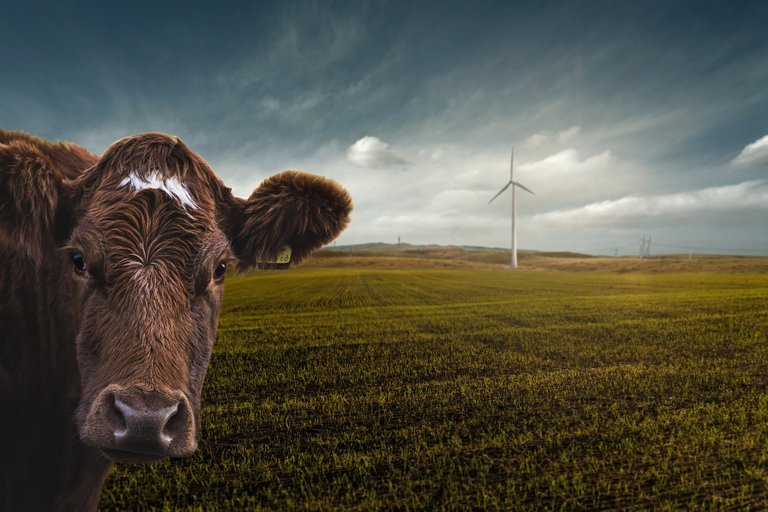
Quanto hai ragione!🤗
Io cerco di consumare solo quelche serve ma non é sempre facile a causa del modo in cui ti vendono i prodotti: ...i cioccolatini che mettono prima in alluminio, poi in cartone plastificato e intorno ancora la plastica, solo perché pensano di vendere di piú.... e lo stesso vale per le confezioni sempre piene solo a metá....
Ma se le ditte lo riempissero fino all' orlo io sarei disposta a pagar di piú per il prodotto e loro avrebbero meno spese per l' involucro, sicché non capisco quale sia la loro logica di guadagno tra l' altro.... é solo per far guadagnare di piú all' industria della plastica.
È tutta una criminalitá legale che non solo viene tollerata ma festeggiata e premiata alla grande, mentre un ragazzino che pianta un seme di canapa e gli da l' aqcua lo sbattono in carcere direttamente. Povero mondo!!!!😵
Sono completamente d'accordo! Recentemente vedo che alcuni stanno cominciando a mettere i prodotti in imballaggi di cartone, sarebbe già una cosa molto significativa, perché almeno si potrebbe riciclare un po' di più... Ma in generale nemmeno io capisco quale sia la logica di guadagno, rimane un mistero 😢
Prima del periodo coronavirus mi sembrava che stessimo andando verso la direzione giusta, ma adesso siamo tornati a elogiare il monouso anche per quelle cose che non lo richiedono. Non parlo di mascherine, che sicuramente sono più igieniche se monouso, ma ad esempio buste per la spesa, alimenti, bevande, posate, ... Uff!
Grazie per il tuo commento, ti auguro una buona giornata ☺
Ti ringrazio 😊Io invece sono nella speranza che con la crisi la gente compri meno cose inutili.... forse si rende conto di piú del valore degli oggetti😅
Buona serata 👋
Excellent, well written article!
Good luck with the contest!
Thank you very much, it's always a pleasure to receive a feedback 😊 I wish you a nice day!
Oh yes, your article is well written my dear!
🥰🌺🤙
!ENGAGE 25
Thanks a lot for the support 😍
ENGAGEtokens.Bello sapere che c'è qualcuno che si preoccupa del nostro pianeta!
Se tutti seguissimo almeno in parte, alcune di queste "motivazioni", magari qualcosina potrebbe cambiare!
!discovery 50
Le cose che si possono fare sono parecchie, questa è solo una minima parte :) :) grazie, a presto!
Hi Delilha ciao come stai? Grazie for entering the contest and coming up with such a great story.
Zero-waste is a movement that promotes the conservation of all resources through responsible production, consumption, reuse and recovery of products, packaging and materials without the use of incinerators and without discharges into the soil, water or air that threaten the environment or human health. Zero-waste encourages a more circular approach to how we use resources”.
Amen!
Thanks for joining g the contest and see you on the next one which will be published tonight
It's always a pleasure :) thank you very much for the comment, I wish you a great day :)
Congratulations @delilhavores! You have completed the following achievement on the Hive blockchain and have been rewarded with new badge(s) :
You can view your badges on your board and compare yourself to others in the Ranking
If you no longer want to receive notifications, reply to this comment with the word
STOPDo not miss the last post from @hivebuzz:
Oh thank you :)
You're welcome @delilhavores
Support us back and vote for our witness.
You will get one more badge and bigger upvotes from us when we notify you.
Thanks for the support 💕
This post was shared and voted inside the discord by the curators team of discovery-it
Join our community! hive-193212
Discovery-it is also a Witness, vote for us here
Delegate to us for passive income. Check our 80% fee-back Program